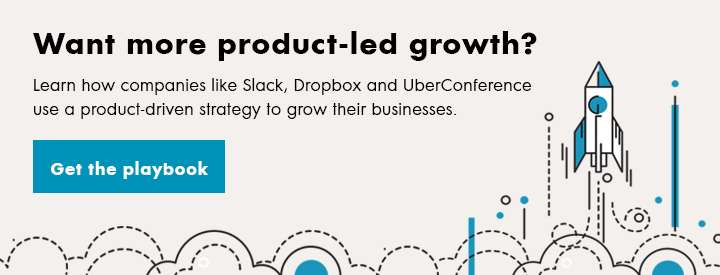
You’ve built a phenomenal product. One that everyone (and their mother, brother, coworker, and friend) wants to use. More importantly, you’ve built your company around the idea that you are different. You live to serve your customer, to make a product that delights and excites and doesn’t get bogged down in procurement cycles and delayed implementations. You don’t want your company aligned around a boiler room, ‘always be closing’ sales culture.
We’re here to tell you that it doesn’t have to be that way. Sales is not a dirty word.
Remind yourself of this: a sales team, by any other name, is still a group of individuals focused on acquiring and accelerating new revenue for the company. In product-led businesses, this often takes the form of customer experience, customer support and / or customer success. When approached in the right way, layering in a human sales effort into your product-led business can accelerate growth while maintaining envy-worthy unit economics.
But what should sales look like in a product-led company? The fundamentals of sales remain the same – it’s all about engaging the right people, at the right time, with relevant information. But the who, when, and how have to adapt to support a product-led business.
Who
You’re generating hundreds, maybe thousands of leads and creating great buzz, but are you attracting the right customers? You should consider three things here:
- Target market segment is as important as ever. Do you understand your ideal buyer? It’s more than LTV and CAC – it’s important to understand how you stack up against your competition, relative deal size, speed of adoption and the value you deliver to the end user. Any sales and marketing tactics you do employ should be targeted at this segment.
- Your product is a lead gen tool. A free product (should you choose to employ this PLG pricing technique) is offered to show value and build credibility as part of the sales process, but every lead is not created equal; neither is every customer. Leverage your knowledge of your ideal customer profile to point your resources at the right trial and / or free product leads and use your product to help identify those people.
- Let them come to you. Steer clear of traditional high-activity, dial for dollars, inside sales plays. Cold-calling is not for your business. You have users in your product who will naturally hand raise – they will want help, to have a question answered, or request a new feature. Align your resources to supporting these engaged users and moving them further through your funnel.
When
You don’t have infinite resources, so an “early and often” or traditional “swarm” sales approach does not work. Instead, you need to make every interaction count. There are three places to focus the time of your ‘sales’ team:
- Support: Provide an exceptional customer experience from the first time they touch your product. Put SLAs in place for response time, ensure that every question is answered quickly and issues are resolved to offer a frictionless product experience. These are not quota-hungry salespeople, but helpers and product evangelists who are educating your users and the market
- Conversion: The fastest way to move the needle is to get more out of the leads you’re already generating. Review your entire funnel for opportunities for 1:1 or 1:many touch points and opportunities to remove drop off points. Examples include, but are not limited to, live chat, public training, FAQs, minimizing setup time, mobile experience and more.
- Retention: This is really about adoption. Don’t wait until you see signs of churn, spend time in the first few days / weeks / months monitoring usage. A product that is core to an employee’s or company’s daily life is hard to replace. There are many creative ideas to increase adoption. These might include prompting users with in-app messaging, offering services support in initial setup, extending a referral bonus to enhance your network effect, sharing tips & tricks via automated email touch points and more.
How
Repeat after me: less is more. Don’t try to engage a buyer in an hour long demo, refrain from pitching in every conversation, resist the urge to over-engineer or over-complicate interactions. Instead:
- Employ a bottoms up sale. It’s about arming power users with a business case to take to the decision maker. Show value to your end user and make your product core to their everyday activities. By focusing on the end user experience and encouraging them to invite their coworkers in, you extend the network effect and build a base of users that can grow to department and / or company-wide adoption
- Get your compensation plan right. Don’t pay your sales / customer success people on metrics that encourage traditional sales behavior. If you track dials or talk time, that is what they will focus on. Tie them to what really matters: CSAT, NPS and net churn.
Now here’s the fun part. At some point, you may start to move up market. Do not fall into the trap of assuming the same style of selling will scale with you. Be flexible, be nimble and be ready to adapt. What works for an SMB market may not work as deal size grows. If the day comes where you need an experienced enterprise sales team to close 6-figure deals, my advice is this: embrace it, but don’t let that style creep into your core segment or detract from the success you’ve had in a product led model.
This article is an excerpt of OpenView’s PLG Playbook. Sign up to receive additional chapters as they are released here.
Liz Cain is VP of Go-to-Market at OpenView, the expansion stage VC.
Also published on Medium.
